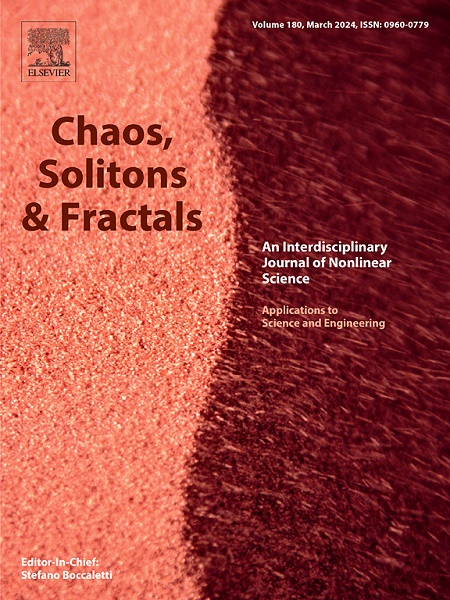FG-MFCPs在1:2参数共振下无限维同斜分岔引起的动力失稳
IF 5.6
1区 数学
Q1 MATHEMATICS, INTERDISCIPLINARY APPLICATIONS
引用次数: 0
摘要
本文研究了在1:2参数共振条件下引起MFCPs动态拉入失稳的同斜结构的持久性。采用多尺度技术将描述MFCPs运动的控制方程转化为等效方程。应用IDGDT证明了扰动作用下等效系统的同宿分岔,并根据高阶Taylor展开导出了一个更精确的同宿分岔阈值条件。数值模拟验证了理论预测,并分析了不同边界条件和参数激励对动力学行为的影响。结果表明,强化边界约束能有效抑制非线性响应。数值分析表明,在四种边界条件下,CC边界诱导同斜分岔所需的激励幅值明显大于其他边界条件,而CF边界所需的激励幅值最低。本研究对微/纳米流体系统、传感器技术、微结构动力学优化具有重要的理论和实践价值。本文章由计算机程序翻译,如有差异,请以英文原文为准。
Dynamic instability induced by infinite-dimensional homoclinic bifurcations of FG-MFCPs under 1:2 parametric resonance
This paper investigates the persistence of homoclinic structures resulting in the dynamic pull-in instability for MFCPs under 1:2 parametric resonance. The multi-scale technique is conducted to convert the governing equation describing the motions of the MFCPs to an equivalent equation. The IDGDT is applied to demonstrate the homoclinic bifurcations for the equivalent system under perturbations, and a more precise threshold condition for homoclinic bifurcation is derived according to higher-order Taylor expansion. Numerical simulations validate the theoretical predictions and analyze the impact of different boundary conditions and parametric excitation on the dynamic behaviors. The results demonstrate that reinforced boundary constraints effectively suppress nonlinear responses. The numerical analysis demonstrates that under the four boundary conditions, the excitation amplitude required to induce homoclinic bifurcation is markedly greater for the CC boundary than for the others, whereas the CF boundary necessitates the lowest amplitude. This research holds significant theoretical and practical value for micro/nanofluidic systems, sensor technology, and the optimization of microstructural dynamics.
求助全文
通过发布文献求助,成功后即可免费获取论文全文。
去求助
来源期刊

Chaos Solitons & Fractals
物理-数学跨学科应用
CiteScore
13.20
自引率
10.30%
发文量
1087
审稿时长
9 months
期刊介绍:
Chaos, Solitons & Fractals strives to establish itself as a premier journal in the interdisciplinary realm of Nonlinear Science, Non-equilibrium, and Complex Phenomena. It welcomes submissions covering a broad spectrum of topics within this field, including dynamics, non-equilibrium processes in physics, chemistry, and geophysics, complex matter and networks, mathematical models, computational biology, applications to quantum and mesoscopic phenomena, fluctuations and random processes, self-organization, and social phenomena.
 求助内容:
求助内容: 应助结果提醒方式:
应助结果提醒方式:


